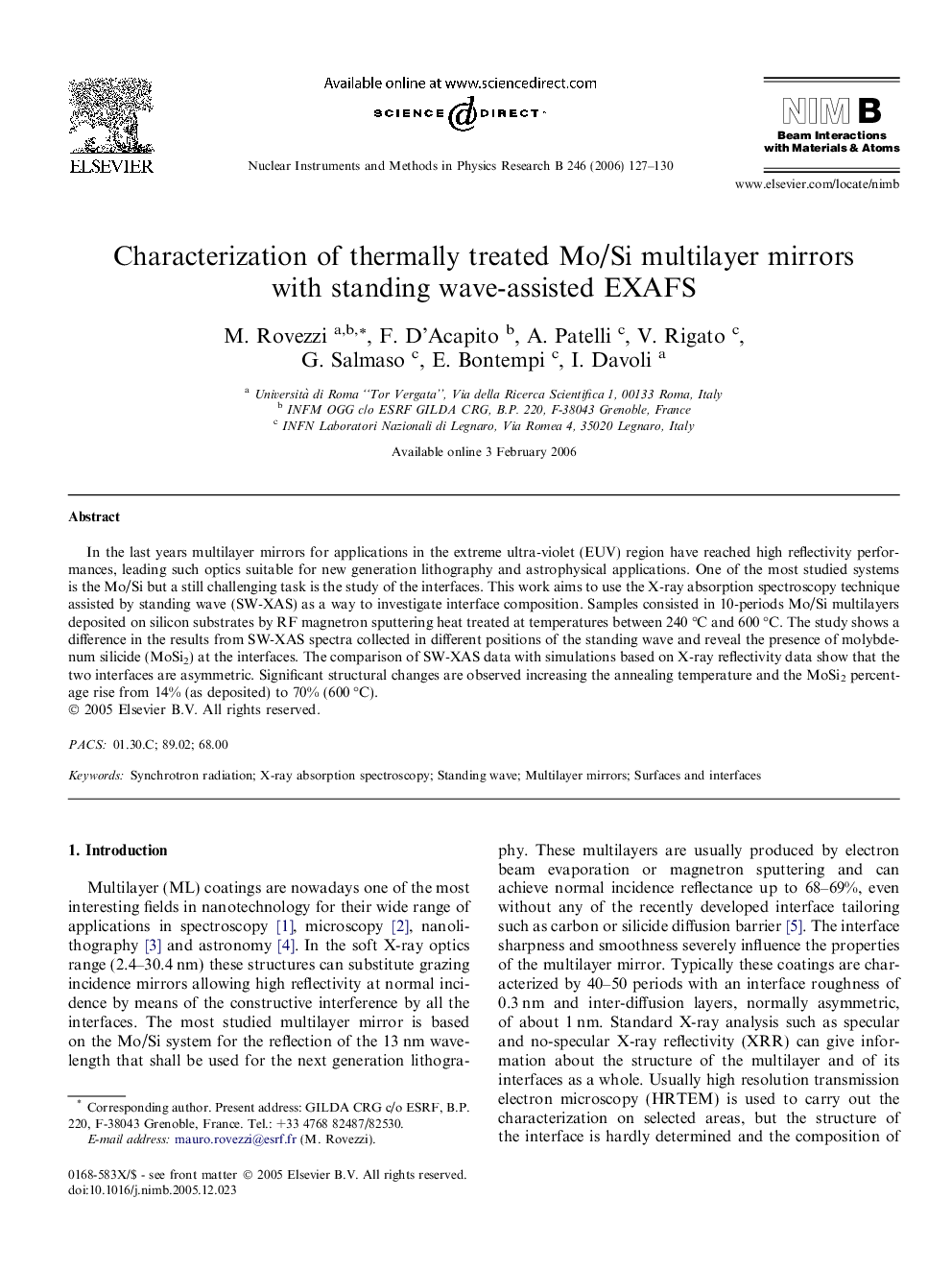| Article ID | Journal | Published Year | Pages | File Type |
|---|---|---|---|---|
| 1688075 | Nuclear Instruments and Methods in Physics Research Section B: Beam Interactions with Materials and Atoms | 2006 | 4 Pages |
In the last years multilayer mirrors for applications in the extreme ultra-violet (EUV) region have reached high reflectivity performances, leading such optics suitable for new generation lithography and astrophysical applications. One of the most studied systems is the Mo/Si but a still challenging task is the study of the interfaces. This work aims to use the X-ray absorption spectroscopy technique assisted by standing wave (SW-XAS) as a way to investigate interface composition. Samples consisted in 10-periods Mo/Si multilayers deposited on silicon substrates by RF magnetron sputtering heat treated at temperatures between 240 °C and 600 °C. The study shows a difference in the results from SW-XAS spectra collected in different positions of the standing wave and reveal the presence of molybdenum silicide (MoSi2) at the interfaces. The comparison of SW-XAS data with simulations based on X-ray reflectivity data show that the two interfaces are asymmetric. Significant structural changes are observed increasing the annealing temperature and the MoSi2 percentage rise from 14% (as deposited) to 70% (600 °C).
